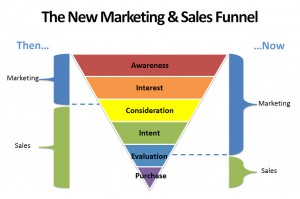
In my last blog post I shared advice on what to do if you report to a “post turtle sales manager”. We run the risk however of hiring people, promoting them and placing them in key positions without skill, knowledge or training in every area. One of the most dangerous areas to have a post turtle is marketing. In this post I will share what salespeople must do if they find they have “post turtle’s running marketing”. If you find you work in an organization that has post turtle marketing this blog is for you.
In today’s business climate it is one of rapid change. It should not surprise us as more and more information is available on the internet and as much as 70% of the buying process is done before the buyer calls a sales person. The trouble a number of sales teams face is having post turtle marketing support. The marketing team, if they have one, is comprised of people who are excellent at creating sell sheets, are proficient at negotiating ad costs, media buys, and purchasing logo coffee mugs and t shirts but lack an understanding or appreciation of how your buyers are buying today. They probably grew up through the ranks in your organization and seemed to have a proficiency in copy writing, maybe creative, and were awesome at creating excel spread sheets with customer names and executing mass mailings flawlessly. They insured your trade show booth arrived on time an in their defense this is what most companies thought marketing was. For many organizations this is what they thought marketing was, but today it is much, much more.
What is marketing?
Marketing is the activity, set of institutions, and processes for creating, communicating, delivering, and exchanging offerings that have value for customers, clients, partners, and society at large. (marketingpower.com)
“Because the purpose of business is to create a customer, the business enterprise has two–and only two–basic functions: marketing and innovation. Marketing and innovation produce results; all the rest are costs. Marketing is the distinguishing, unique function of the business.” ( Peter Drucker on Marketing)
Marketing is the process of communicating the value of a product or service to customers, for the purpose of selling the product or service. It is a critical business function for attracting customers. (Wikipedia)
Positioning; “an organized system for finding a window in the mind. It is based on the concept that communication can only take place at the right time and under the right circumstances” (Positioning; The Battle for your mind)
First, it’s marketing’s responsibility to see that everyone is playing the same tune in unison. Second, it’s marketing’s assignment to turn that tune or differentiating idea into what we call a coherent marketing direction. ( Jack Trout)
Marketing is the name we use to describe the promises a company makes, the story it tells, the authentic way it delivers on that promise. – (http://www.thedefinitionofmarketing.com )
…interesting, nowhere does it say design t shirts and coffee mugs with company logos or book ads in trade publications?
The market we serve today is dynamic and changing.
How do I define “Marketing”?
“The fundamental responsibility of marketing is; to understand your market, its buyers, their buying process and criteria. Once you have a thorough understanding position your product and or service in the minds of buyers in your market based on the problems you solve for them” ( Mark Allen Roberts)
What do we know?
We live in an Age of Digital Darwinism… We are all super busy and If you can be dispensed of you will.
50% of leads are qualified but not ready to buy (Hubspot)
87% of B2B buyers said content plays a major role in vendor selection.
Companies that excel at lead nurturing generate 50% more sales ready leads at a 33% lower cost. (Forester Research)
79% of leads are not converted to a sale because they are not nurtured along.
Assuming you agree with the above and you too have noticed a shift, a change in the market, what is a salesperson to do?…Adapt!
There are a number of very good marketing automation companies;
Hubspot
Marketo
Infusionsoft
Eloqua
Make sure you review each and find one that best serves your company, the size of your company and interfaces with your CRM.
Sales today is not about spending a lot of windshield time as much as lap top time.
Sales today is not about working more hours, working harder, it’s about leveraging technology and your market knowledge to work smarter.
Success in sales today is about nurturing your leads until they are ready to buy and if marketing is not doing it you must to survive.
Hitting and surpassing your sales goals today is about helping customers find you with brilliant marketing communication that shares the problems you solve for your buyers in the buyer’s language.
For years sales teams have been told to; just make it happen. Sales super stars are good at figuring out what we have to work with, creating our own tools as needed and making it happen. If you have post turtle marketing it is not helping you connect with buyers who are looking for you right now. As the “just make it happen folks” we need to take it upon ourselves to learn how our buyers are buying, the criteria they are using to make buying decisions and to be where they are looking. We must embrace the tools, studies and technology available and implement it to better serve the markets we are responsible for.
The salesperson of the future will embrace technology and leverage its capability to create sales velocity working smarter not harder.
What about your company?
Do you think marketing is about coffee mugs and t shirts?
Classical marketing teaches never let sales create their own sales tools, but if marketing won’t or can’t, what should they do? What are the risks if they do?
In closing I want to say that if your marketing department is still caught up in thinking their main job is creating sell sheets, trade show booths and a line of company logo clothing to build brand awareness it is not that they are bad people, or not adding any value. Someone needs to do those product and branding things. However they like sales need and must adapt. I had a preacher once say something that really rocked my boat and it applied here as well…” if you want to see where someone’s priorities lie, open their check book.” If we opened your companies’ marketing checkbook where does your marketing spend its budgets? This will be one of best indicators if the person running your marketing department today is a post turtle. The good news is there is no better day to change than today.
As salespeople, we are paid to make it happen hit our numbers. We are not perfect by any means, however to not use what we know about how buying today and adapting to better serve them is like hunting an elephant with a BB gun. You might feel good you are busy, but your odds of success are nil (and so will be your sales commissions). What I am sharing is marketing’s job make no mistake. However, if your marketing is not doing it, you must until they adapt. After all you are judged by your sales numbers, your results. For years you have figured it out and made it happen. Use that same pioneer drive and embrace how buyers are buying today and the technology available to improve your results.













